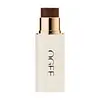What's inside
What's inside
 Key Ingredients
Key Ingredients

 Benefits
Benefits

 Concerns
Concerns

 Ingredients Side-by-side
Ingredients Side-by-side

Ethylhexyl Palmitate
EmollientPolyethylene
AbrasiveLauroyl Lysine
Skin ConditioningDiisostearyl Malate
EmollientTriethylhexanoin
MaskingMica
Cosmetic ColorantDimer Dilinoleyl Dimer Dilinoleate
EmollientCaprylic/Capric Triglyceride
MaskingSqualane
EmollientEuphorbia Cerifera Wax
Silica
AbrasiveC12-15 Alkyl Benzoate
AntimicrobialPolyhydroxystearic Acid
EmulsifyingPersea Gratissima Oil
Skin ConditioningGlyceryl Hydrogenated Rosinate
Bis-Diglyceryl Polyacyladipate-2
EmollientHydrogenated Vegetable Oil
EmollientTribehenin
EmollientCaprylyl Glycol
EmollientBehenyl Behenate
EmollientTocopheryl Acetate
AntioxidantPentaerythrityl Tetra-Di-T-Butyl Hydroxyhydrocinnamate
AntioxidantCeramide Ng
Skin ConditioningAlaria Esculenta Extract
Skin ProtectingLavandula Stoechas Extract
MaskingTocopherol
AntioxidantPalmitoyl Hexapeptide-12
Skin ConditioningCI 77491
Cosmetic ColorantCI 77492
Cosmetic ColorantCI 77499
Cosmetic ColorantCI 77891
Cosmetic ColorantCI 19140
Cosmetic ColorantCI 77007
Cosmetic ColorantEthylhexyl Palmitate, Polyethylene, Lauroyl Lysine, Diisostearyl Malate, Triethylhexanoin, Mica, Dimer Dilinoleyl Dimer Dilinoleate, Caprylic/Capric Triglyceride, Squalane, Euphorbia Cerifera Wax, Silica, C12-15 Alkyl Benzoate, Polyhydroxystearic Acid, Persea Gratissima Oil, Glyceryl Hydrogenated Rosinate, Bis-Diglyceryl Polyacyladipate-2, Hydrogenated Vegetable Oil, Tribehenin, Caprylyl Glycol, Behenyl Behenate, Tocopheryl Acetate, Pentaerythrityl Tetra-Di-T-Butyl Hydroxyhydrocinnamate, Ceramide Ng, Alaria Esculenta Extract, Lavandula Stoechas Extract, Tocopherol, Palmitoyl Hexapeptide-12, CI 77491, CI 77492, CI 77499, CI 77891, CI 19140, CI 77007
Caprylic/Capric Triglyceride
MaskingSimmondsia Chinensis Seed Oil
EmollientCera Alba
EmollientSucrose Tetrastearate Triacetate
EmollientC13-14 Alkane
SolventOlea Europaea Fruit Oil
MaskingCopernicia Cerifera Wax
C18-21 Alkane
SolventOryza Sativa Bran Wax
Skin ConditioningSambucus Nigra Fruit Extract
AstringentCoffea Arabica Seed Oil
MaskingSilica
AbrasivePentaclethra Macroloba Seed Oil
EmollientPogostemon Cablin Leaf Extract
PerfumingShorea Robusta Resin
TonicOctyldodecanol
EmollientOleic/Linoleic/Linolenic Polyglycerides
EmollientHelianthus Annuus Seed Oil
EmollientTocopherol
AntioxidantBeta-Sitosterol
Emulsion StabilisingSqualene
EmollientMica
Cosmetic ColorantCaprylic/Capric Triglyceride, Simmondsia Chinensis Seed Oil, Cera Alba, Sucrose Tetrastearate Triacetate, C13-14 Alkane, Olea Europaea Fruit Oil, Copernicia Cerifera Wax, C18-21 Alkane, Oryza Sativa Bran Wax, Sambucus Nigra Fruit Extract, Coffea Arabica Seed Oil, Silica, Pentaclethra Macroloba Seed Oil, Pogostemon Cablin Leaf Extract, Shorea Robusta Resin, Octyldodecanol, Oleic/Linoleic/Linolenic Polyglycerides, Helianthus Annuus Seed Oil, Tocopherol, Beta-Sitosterol, Squalene, Mica
 Reviews
Reviews

Alternatives
Ingredients Explained
These ingredients are found in both products.
Ingredients higher up in an ingredient list are typically present in a larger amount.
This ingredient is an emollient, solvent, and texture enhancer. It is considered a skin-softener by helping the skin prevent moisture loss.
It helps thicken a product's formula and makes it easier to spread by dissolving clumping compounds.
Caprylic Triglyceride is made by combining glycerin with coconut oil, forming a clear liquid.
While there is an assumption Caprylic Triglyceride can clog pores due to it being derived from coconut oil, there is no research supporting this.
Learn more about Caprylic/Capric TriglycerideMica is a naturally occurring mineral used to add shimmer and color in cosmetics. It can also help improve the texture of a product or give it an opaque, white/silver color.
Serecite is the name for very fine but ragged grains of mica.
This ingredient is often coated with metal oxides like titanium dioxide. Trace amounts of heavy metals may be found in mica, but these metals are not harmful in our personal products.
Mica has been used since prehistoric times throughout the world. Ancient Egyptian, Indian, Greek, Roman, Aztec, and Chinese civilizations have used mica.
Learn more about MicaSilica, also known as silicon dioxide, is a naturally occurring mineral. It is used as a fine, spherical, and porous powder in cosmetics.
Though it has exfoliant properties, the function of silica varies depending on the product.
The unique structure of silica enhances the spreadability and adds smoothness, making it a great texture enhancer.
It is also used as an active carrier, emulsifier, and mattifier due to its ability to absorb excess oil.
In some products, tiny microneedles called spicules are made from silica or hydrolyzed sponge. When you rub them in, they lightly polish away dead skin layers and enhance the penetration of active ingredients.
Learn more about SilicaTocopherol (also known as Vitamin E) is a common antioxidant used to help protect the skin from free-radicals and strengthen the skin barrier. It's also fat soluble - this means our skin is great at absorbing it.
Vitamin E also helps keep your natural skin lipids healthy. Your lipid skin barrier naturally consists of lipids, ceramides, and fatty acids. Vitamin E offers extra protection for your skin’s lipid barrier, keeping your skin healthy and nourished.
Another benefit is a bit of UV protection. Vitamin E helps reduce the damage caused by UVB rays. (It should not replace your sunscreen). Combining it with Vitamin C can decrease sunburned cells and hyperpigmentation after UV exposure.
You might have noticed Vitamin E + C often paired together. This is because it is great at stabilizing Vitamin C. Using the two together helps increase the effectiveness of both ingredients.
There are often claims that Vitamin E can reduce/prevent scarring, but these claims haven't been confirmed by scientific research.
Learn more about Tocopherol